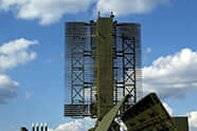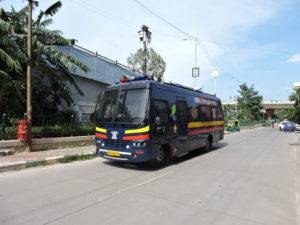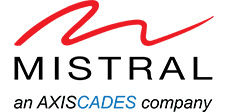Introduction
The article in November’s IP Surveillance Tech. Brief (Surveillance Planning – Getting the best out of the Hardware [Part II]) touched upon the topic of the impact of lighting when planning a surveillance set-up. This article goes into more detail on the subject matter of low-light and no-light surveillance.
What is Low-light and No-light Surveillance?
An IP video surveillance camera typically comes with specifications for the performance of the camera under various light conditions. Typically the specifications state the minimum illumination for colour images (e.g. 1 lux), and a minimum illumination for monochrome images (e.g. 0.05 lux). These figures specify the ambient light conditions under which the camera returns colour images/video, the threshold at which the camera shifts to a low-light (monochrome) mode, and the threshold at which it can no longer continue recording images/video of viewable quality.Surveillance under ambient lighting conditions lower than the IP video surveillance camera’s minimum threshold for monochrome images qualifies as no-light surveillance.
Camera characteristics that impact Low-light Surveillance
Different surveillance cameras support different figures for the above two specifications, based on the sensitivity and size of the sensor used in the camera; the aperture of the lens fitted on the camera; and the shutter speed supported by the camera.
Sensor
The size of the sensor is usually a standard specification, for IP surveillance cameras, with a larger size delivering better image/video quality. Although a user will not have direct information on the sensitivity of the sensor used in the surveillance camera, the dynamic range of the sensor is a good indication of its sensitivity.
Aperture
The f-stop number, which is the measure of the aperture of the lens, is part of the specifications of a surveillance camera. A larger aperture (e.g. f-stop 1.8) allows more light to pass through, while a smaller aperture (e.g. f-stop 22) allows less light to pass through.Lenses come as either fixed-iris or auto-iris. As mentioned in the article referred above, auto-iris lenses are recommended for surveillance requirements where the source of light is going to be ambient lighting or where the area under surveillance is likely to have multiple levels of lighting. Fixed-iris lenses are ideal for artificial lighting situations, where there is a consistent level of lighting throughout the surveillance period.
Shutter speed
Although the term “shutter” comes from still photography (and that too from the pre-digital days, when shutter referred to a mechanical shutter), it is used in the case of digital video devices too. In the case of video recording, the shutter speed refers to the amount of time each frame is exposed (e.g. 1/60 – a sixtieth of a second, 1/10000 – a ten-thousandth of a second, or even 2 – two seconds).
Shutter speed is usually not a specification that appears in the datasheets of IP surveillance cameras. However, when available, it indicates the level of clarity the IP surveillance camera will be able to capture images. A higher shutter speed translates to individual frames appearing sharper (the downside is that movement will appear jerky), while a lower shutter speed translates to blurred images when the object moves within the frame (although frame transitions will be smooth).
In terms of the impact of the shutter speed on image quality under different lighting conditions, the point to note is that the lower the shutter speed, the more the exposure time of the sensor to light. Under low-light conditions, a slower shutter speed may show a brighter image. Therefore, a user has to be careful when shown still images as proof of the quality of the video surveillance camera. The downside of a slow shutter speed, as noted above, is that moving objects tend to blur.
No-light surveillance solutions
If the lighting conditions are below the threshold defined by the camera characteristics, there are a couple of solutions that allow the surveillance camera to continue capturing content.
Low-light Image Intensifiers
The products that fall into this category are Image Intensifiers and On-chip Gain Multiplication. These are solutions that are an add-on module to an existing camera or are built into the electronics of the camera itself, and make use of whatever is the available ambient light to generate an image of surveillance quality.In the case of Image Intensifiers, the available light is amplified using an image intensifier apparatus, which then connects to a standard camera for content capture. The amplified light is then used to create the image on a phosphor screen. A green phosphor is used for the projection, as the human eye can differentiate the highest number of shades in the colour green.
On-chip Gain Multiplication uses higher sensitivity CCD detectors by implementing on-chip gain multiplication, which involves multiplication of photon-generated charge above the CCD’s noise levels through the use of high CCD clock voltages.
Infrared (IR) Illumination
IR Illumination is used in conditions where the ambient light is nil, thereby precluding the use of low-light image intensifiers. It involves the use of an Infrared illuminator to light up a specific area under surveillance, and then use a standard camera (with IR-sensitive detectors) to capture the content. The illuminator technology can be filtered incandescent light, LED, or Laser.
The IR Illuminator can either be an add-on module to the camera (in a separate housing) or integrated in the camera housing.
Thermal Imaging
Thermal Imaging works on the principle that all objects emit radiation as a function of their temperature. Thermal imagers work by collecting the infrared energy from objects in the scene and creating an electronic image. Thermal imagers are specialized surveillance cameras, with the entire electronics for capturing and representing the content forming part of the camera. There are two types of thermal imagers: cooled, where the camera is cryogenically cooled; and uncooled, where the camera operates at the ambient temperature.
The table below summarises the pros and cons of the various technologies discussed above:
|
Conclusion
The above technologies and solutions can make a significant difference to the ability of the surveillance camera to capture content under low-light and no-light conditions, as evidenced in the visuals below – showing a Smartvue S8 camera’s captured image without and with an IP light-source.



